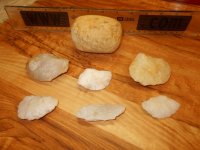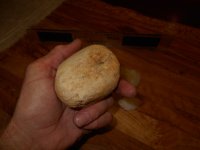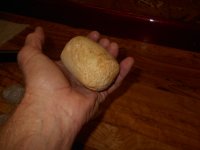These were from the same area I got the big point. Hammerstones are hard to find. I found three. They are about the size of golf balls. The one on the left is a hard limestone, the two on the right quartzite.
The flake blades are nice. These haven't been washed yet. They were used by various groups as basically "razor knives".
More to come...



The flake blades are nice. These haven't been washed yet. They were used by various groups as basically "razor knives".
More to come...



Upvote
0















